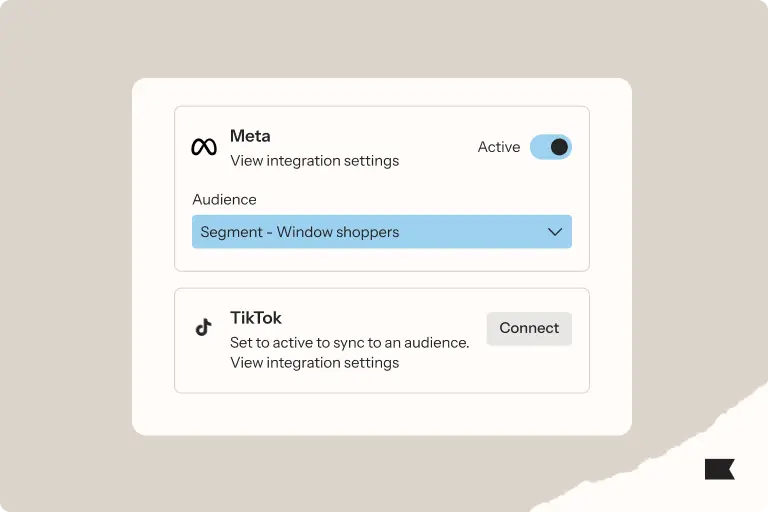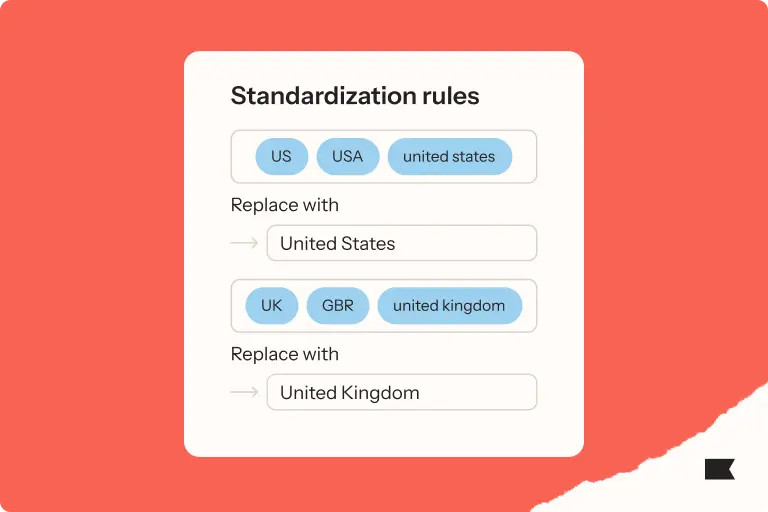Proof that personalization outperforms blasts

The bigger your subscriber list, the riskier it is to send mass email blasts.
Just ask The Messi Store, soccer legend Leo Messi’s lifestyle and apparel brand.
As an international superstar and the second most-followed person on Instagram, Messi and his social media posts about the brand helped grow a massive email list. Fast.
But in The Messi Store’s early days, the team blasted that whole list—and created deliverability problems that took months to resolve. It made email a cost center for their first year using the channel.
Getting flagged as spam by major inboxes is just one of the risks of sending to your entire list. Other risks include:
- Revenue and engagement losses because mass messages don’t resonate with all your subscribers. In one Klaviyo study of 2.5B emails, we saw nearly 2x the open and click rates on segmented sends than we saw on blasts—and 3x the revenue per recipient.
- Shrinking subscriber lists because people feel spammed and unsubscribe. Then you’ve lost the marketing dollars you spent acquiring them as a subscriber—and it can throw off your CAC:LTV ratio, a key indicator of business health.
All this helps explain why, in 2023, a personalized email strategy has attained best practice status.
“There’s so much noise in everyone’s inboxes—you’re only going to click on what’s relevant to you in the moment,” says Elcee Vargas, lead product marketing manager at Klaviyo. “That’s universal across any industry.”
There’s so much noise in everyone’s inboxes—you’re only going to click on what’s relevant to you in the moment. That’s universal across any industry.
If you want more proof, here are 6 stories that show a personalized approach outperforms blasts—on average and for specific brands.
Jenni Kayne slashes total email volume by nearly 50% and still grows revenue with personalized sends
Luxury apparel and home brand Jenni Kayne used to take a high-volume approach to email. During holidays, a customer could receive multiple emails per day.
The approach converted, but director of retention Melissa Smith had a hunch that the brand could drive more revenue by paring down the volume and ramping up the personalization.
“I’ve always advocated for less email,” says Smith. “It doesn’t feel like a luxury experience to be getting 3 emails a day.”
I’ve always advocated for less email. It doesn’t feel like a luxury experience to be getting 3 emails a day.
So in 2023, they kicked off the new year with a new less-is-more strategy.
Subscribers started receiving one campaign per day at maximum. The brand increased each message’s relevance by segmenting subscribers into home and apparel shoppers, and launching new flows, like an active-on-site flow.
It worked: In Q1 2023, Jenni Kayne slashed total email volume by 43.8% YoY, and grew their total email revenue by 14.5%. Total revenue that quarter grew even more: 22% YoY.
Ministry of Supply grows campaign revenue by segmenting based on predicted gender
Ministry of Supply began as a menswear brand. When they expanded into women’s fashion, they faced a challenge: How could they show their increasingly diverse subscribers the most relevant apparel in marketing messages?
Senior marketing manager Colleen Maloney and her team saw a personalization opportunity, and they started segmenting one email campaign per week by gender.
They pulled on a variety of data to do that, including the subscriber’s self-reported gender, submitted via email pop-up, and the predicted gender function in Klaviyo’s suite of predictive analytics.
Now, for that weekly send, “the content or even just the subject line is more specific to the gender that the subscriber is shopping for,” says Maloney. “We’ve seen a nice performance lift.”
Specifically: 36.2% YoY growth in revenue from email and 47.3% YoY growth in revenue from campaigns since they started using Klaviyo predictive analytics to target campaigns in September 2022.
Tecovas unlocks a record-setting BFCM with only one email blast
Conventional email wisdom says you should only message your full list during a major sale—like your Black Friday Cyber Monday holiday sale.
But even then, leaning into personalization pays off. Western outfitter Tecovas saw major success during BFCM 2022 with just one mass blast on the first day of their 8-day sale.
Treating our audiences as individuals and trying to get personalized messaging to them is a huge thing we learned from last year.
Beyond that, they took a more targeted approach. They sent campaigns to customers who had clicked on emails about the sale, but had yet to purchase, and relied on 4 distinct, personalized abandonment flows to bring browsers back to the site to buy.
This helped the brand drive 30.5% YoY growth in email revenue during their BFCM sale—a major lift for an established brand.
“We thought about which audiences we wanted to talk to, and how,” says Megan Edwards, their email marketing manager. “Treating our audiences as individuals and trying to get personalized messaging to them is a huge thing we learned from last year.”
Caden Lane promises personalization in their email pop-up—and it outperforms simpler versions
Maternity and baby apparel boutique Caden Lane sells primarily direct-to-consumer—and that means their homepage needs to drive a reliable stream of leads.
One way they approach lead capture: with an on-site pop-up, powered by Klaviyo, offering a discount for an email sign-up.
It sounds simple enough.
But when Caden Lane A/B tested 30 different versions of the form, they learned that the simplest pop-up didn’t actually perform best.
They got more leads with a pop-up that requested additional context on the child customers wanted to shop for—including their gender, age bracket, and birthday.
The promise of personalized emails from date of sign-up appealed to visitors more than a frictionless sign-up process.
100% Pure boosts owned marketing’s revenue share with personalized automation timelines
When clean beauty brand 100% Pure switched back to Klaviyo after a stint with an Oracle email platform, they had one central goal: to get email to drive 20%+ of total revenue again.
With Oracle, they had dipped below that benchmark.
The great thing with a flow is it’s going to go out no matter what, even if someone gets sick. Flows give you a base guaranteed revenue.
To revive email performance, the brand leaned into Klaviyo’s intuitive flows. This empowered 100% Pure to send emails on personalized timelines, triggered by each subscriber’s unique engagement and online browsing activity.
In 2022, email once again drove 20%+ of total revenue, and the brand grew revenue from flows 70.2% YoY.
Investing in flows not only drove revenue, it saved bandwidth for the brand. “Campaigns, you have to put in a lot of effort, and sometimes you’re not as good at executing,” reflects 100% Pure CEO Ric Kostick. “You might have bottlenecks in your creative. The great thing with the flow is it’s going to go out no matter what, even if someone gets sick. Flows give you a base guaranteed revenue.”
Kickstart your personalization strategy today with Klaviyo
Investing in personalization does more than improve customer experience—for many brands, it substantially boosts revenue and protects against costly, time-consuming deliverability issues.
If you’re ready to dive deeper into a personalized email or SMS strategy, Klaviyo has built-in, industry-leading tools to support that, including:
- Intuitive segmentation, so you can easily send relevant messages to hyper-specific audiences—and show or hide content modules to sub-segments of those audiences, using dynamic content.
- Unlimited historical data, so you can segment on behavior patterns dating back as many years as you’ve used the platform. No restrictions or auto-archiving.
- Powerful predictive analytics, so you can target customers based on predicted gender, like Ministry of Supply did, or even predicted lifetime value—aka how much they’re forecasted to spend with you in the next year.
It’s easy for marketers to use these tools autonomously, too, so they can often implement personalized strategies without costly developer resources.
Klaviyo has made an impact for household names like Jenni Kayne—learn more about how it could work for you.

Related content

Discover how ecommerce personalisation enhances customer experiences and boosts revenue with real examples and proven strategies.

Discover how one brand used Klaviyo’s Meta integration to build high-intent audiences, lower CPA, and drive 2x conversions through smarter ad targeting.

Learn how to use Klaviyo’s advanced CDP to drive more revenue this BFCM—from real-time personalization and enriched profiles to warehouse syncs, alerts, and custom segmentation.